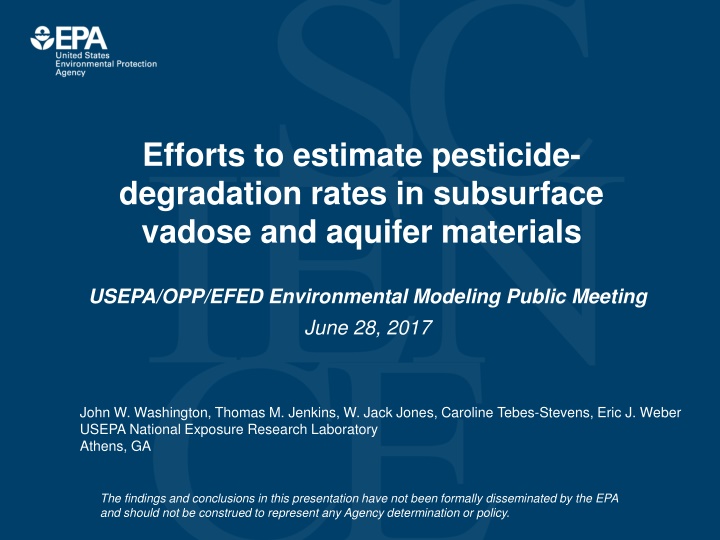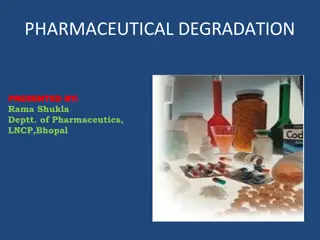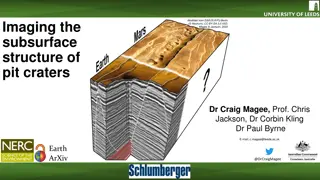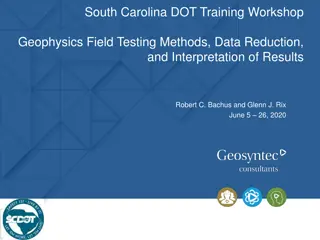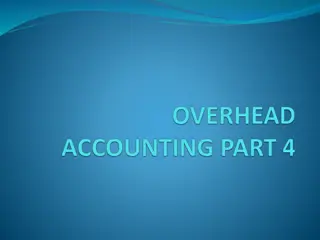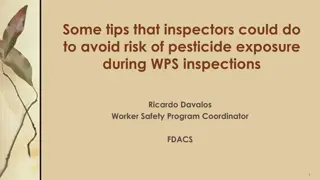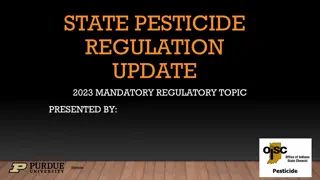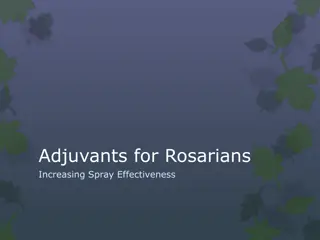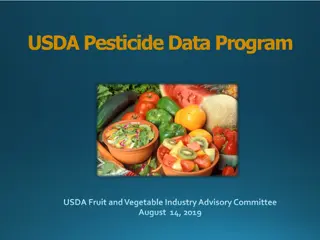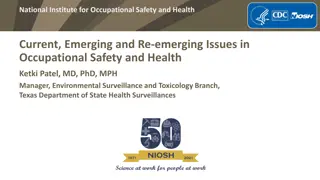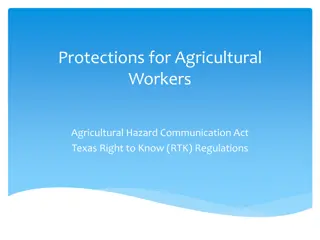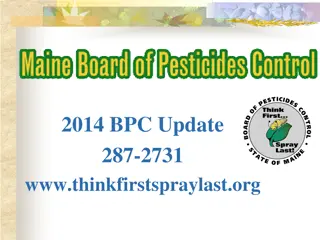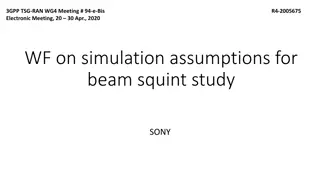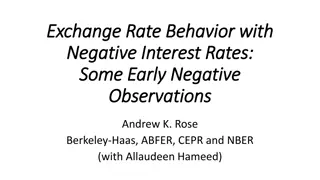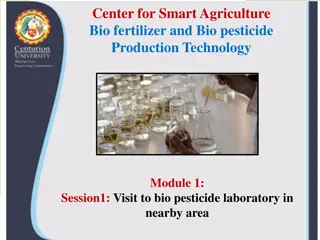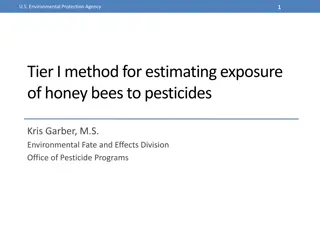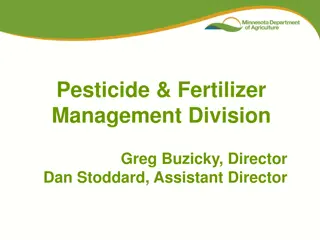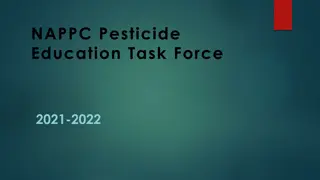Pesticide Degradation Rates in Subsurface: Research Findings
This study explores methods to estimate pesticide degradation rates in subsurface materials through a comprehensive review of 113 studies. Various pesticides, including 1,3-dichloropropene, Atrazine, and Metalaxyl, were analyzed for degradation rates in both surface and unsaturated subsurface conditions. The data reveal important insights into the degradation processes of pesticides in different environmental contexts.
Download Presentation

Please find below an Image/Link to download the presentation.
The content on the website is provided AS IS for your information and personal use only. It may not be sold, licensed, or shared on other websites without obtaining consent from the author.If you encounter any issues during the download, it is possible that the publisher has removed the file from their server.
You are allowed to download the files provided on this website for personal or commercial use, subject to the condition that they are used lawfully. All files are the property of their respective owners.
The content on the website is provided AS IS for your information and personal use only. It may not be sold, licensed, or shared on other websites without obtaining consent from the author.
E N D
Presentation Transcript
Efforts to estimate pesticide- degradation rates in subsurface vadose and aquifer materials USEPA/OPP/EFED Environmental Modeling Public Meeting June 28, 2017 John W. Washington, Thomas M. Jenkins, W. Jack Jones, Caroline Tebes-Stevens, Eric J. Weber USEPA National Exposure Research Laboratory Athens, GA The findings and conclusions in this presentation have not been formally disseminated by the EPA and should not be construed to represent any Agency determination or policy.
Project overview Objective: Explore a method to estimate subsurface pesticide- degradation rates using readily available data Method: peer-reviewed literature search Search for and evaluate pesticide-degradation research reporting rates for both surface and subsurface degradation Results: 113 studies with surface & unsaturated subsurface data 37 distinct pesticides (including stereoisomers) Includes data on depth of subsurface degradation Some studies have data for [Corg] and/or saturated subsurface conditions 1
Subsurface vs. surface T1/2 Data discovered for pesticides including: 1,3-dichloropropene 3,5,6-trichloro-2-pyridinol Acetochlor Acifluoren Alachlor Aldicarb Atrazine Bentazone Carbofuran Chloropicrin Chlorotoluron Chlorpyrifos Chlorthal dimethyl cis-1,3-dichloropropene Deethylatrazine Ethoprop Fenamiphos Fenamiphos sulfone Fenamiphos sulfoxide Fenamiphos residue Flumetsulam Fluometuron Imazapyr Isoproturon Linuron Mecoprop Mecoprop-p Metalaxyl Methyl isocyanate Metolachlor Metribuzin Oxadixyl Primsulfuron Prometryne Propyzamide Thifensulfuron trans-1,3-dichloropropene 2
Subsurface vs. surface T1/2 Plotting data in terms of half-life (T1/2) . . . 3
Subsurface vs. surface T1/2 7 data points define upper limit for all 113 points, except 3 Oxadixyl & carbofuran are not registered for use in US 4
Subsurface vs. surface T1/2 Atrazine is from Stolpe & Shea (1995. Soil Science. 160. 359-370.) 3 soil profiles consisting of T1/2 values for surface, 45-120 cm, & 150-240 cm Mean of 3 T1/2 values for surface & 150-240 cm falls below limiting line Mean of 3 T1/2 values for surface and 45-120 cm exceeds limiting line slightly 5
Subsurface vs. surface T1/2 Plotting Means (+/- 1SD) for each pesticide All means fall below limit line except for oxadixyl & carbofuran Atrazine mean falls below limit Atrazine 1SD is only US-registered pesticide exceeding limiting line considerably All other 1SD values fall below or ~on the limiting line 6
Subsurface vs. surface T1/2 Investigation of evidence of increasing T1/2 with depth Plot of subsurface/surface T1/2 against depth suggests no obvious relationship Absence of evidence of relationship with depth suggests a simple function, T1/2(sub) = f(T1/2(surf)), might be satisfactory 7
Subsurface vs. surface T1/2 No obvious relationship of subsurface T1/2 with Corg 8
Subsurface vs. surface T1/2 atrazine Based on limited data, for saturated subsurface T1/2 The limiting line derived from the unsaturated data appears to be potentially viable for saturated subsurface T1/2s as well Atrazine exceeds the limiting line for these data (from: Blume et al. 2004. J. Agric. Food Chem. 52. 7382-7388) 9
Subsurface vs. surface T1/2 T1/2sub = (4.8)(T1/2surf) + 53.0 R2 = 0.93; P = 0.0005 Based on these preliminary efforts: there is a potential that subsurface-degradation rates might be conservatively estimated from surface-soil-degradation rates 10
Acknowledgements Contributors Questions?? John W. Washington Thomas M. Jenkins W. Jack Jones Caroline Tebes-Stevens Eric J. Weber Thanks to EPA/OPP/EFED for helpful discussions, including: Katrina White Rochelle Bohaty Gabe Rothman Nelson Thurman Stephen Wente 11
